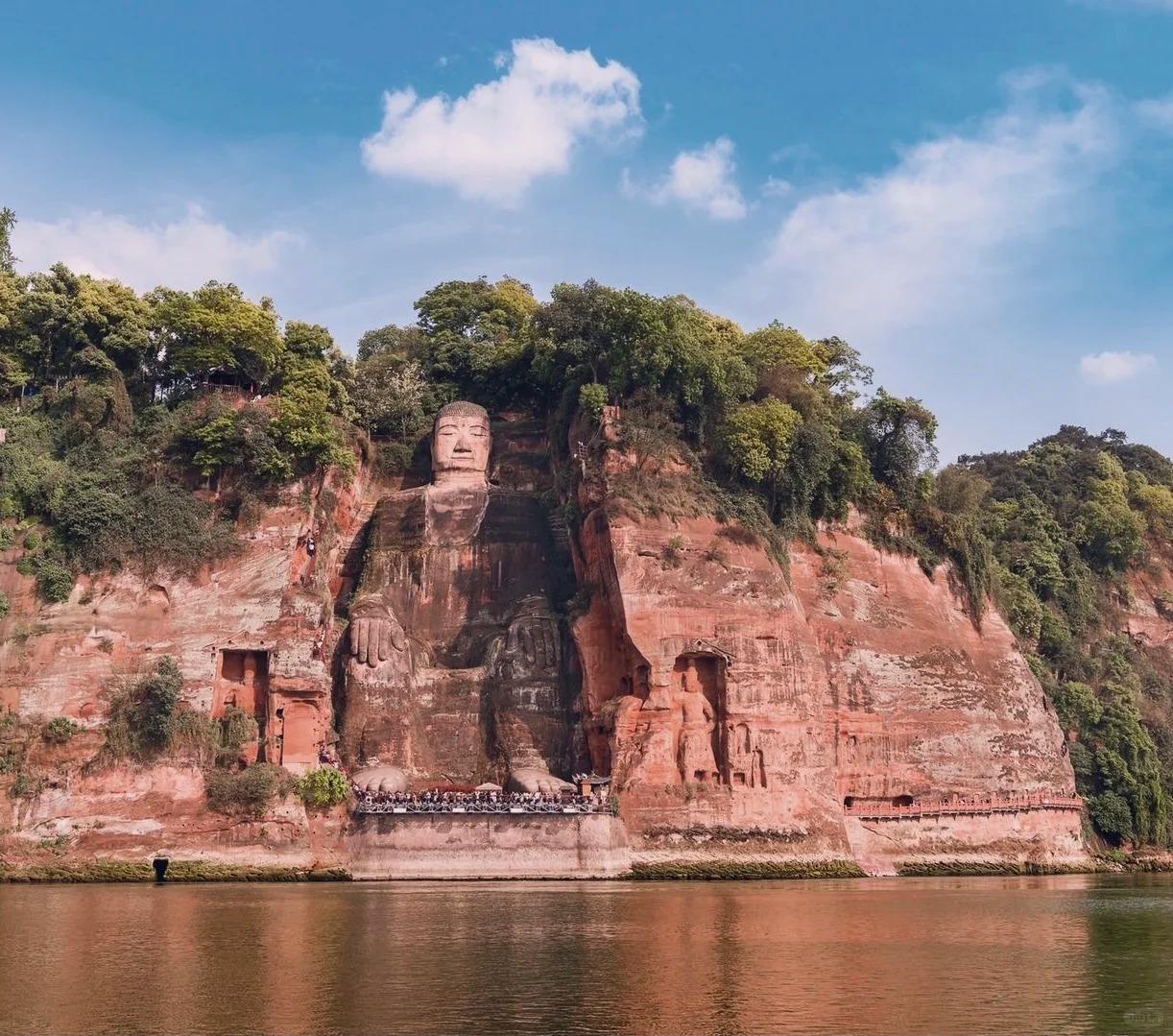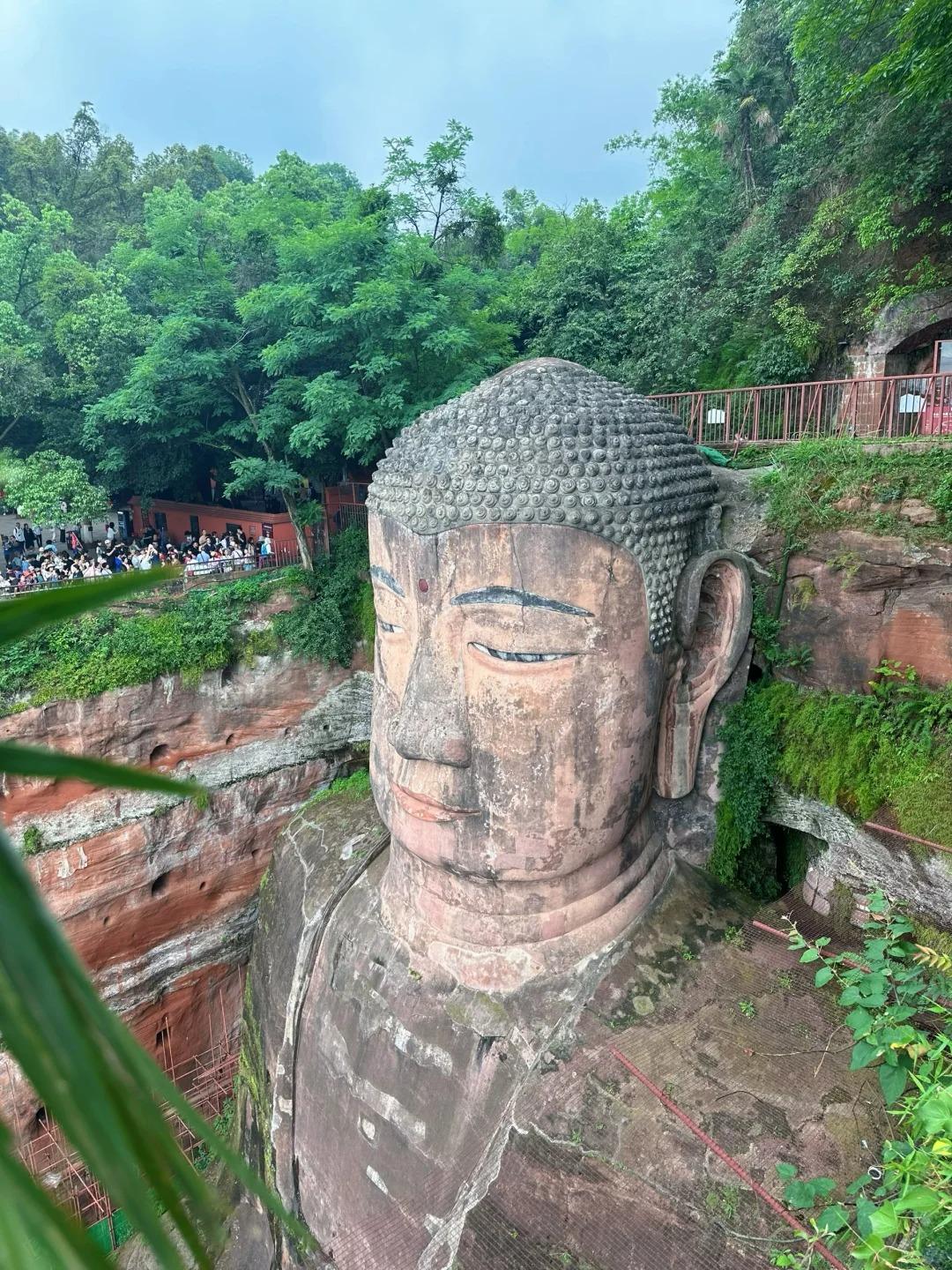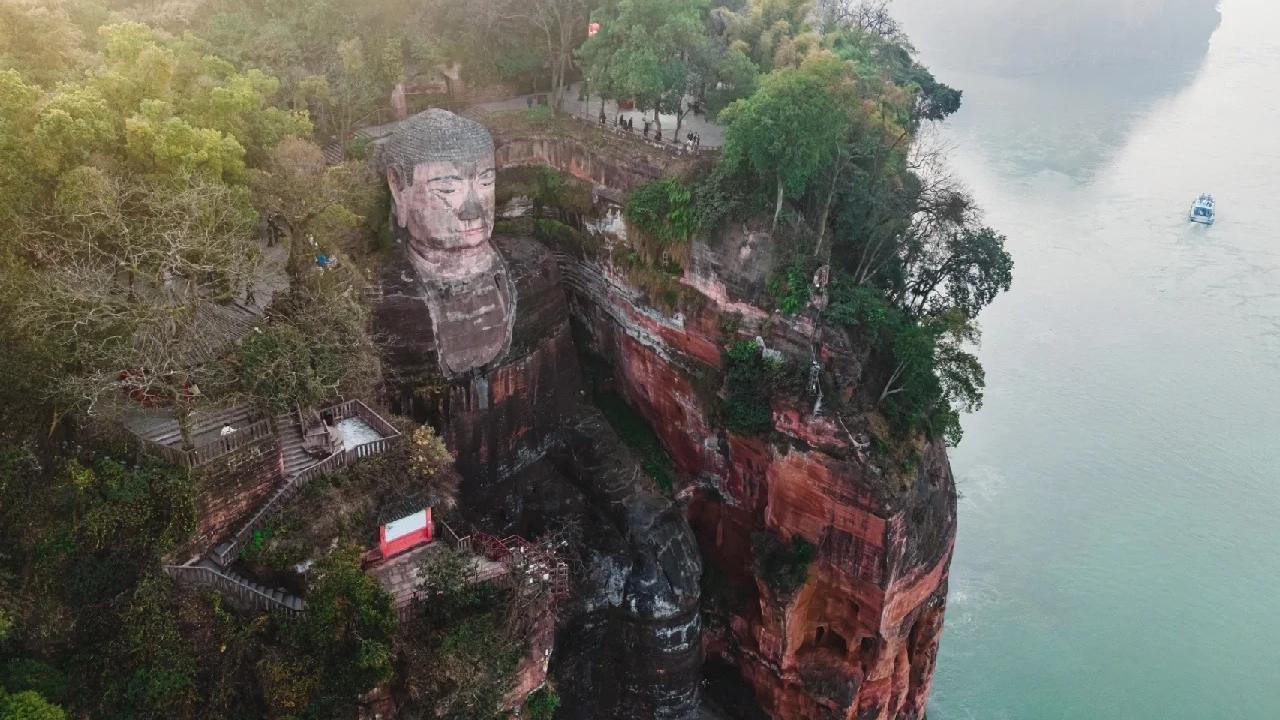Introduction to the Giant Buddha Statue
Nestled in the scenic city of Leshan, Sichuan Province, the Giant Buddha statue stands as an awe-inspiring testament to human ingenuity and devotion. This colossal stone sculpture, carved into the face of Mount Lingyun, overlooks the confluence of three rivers: the Min, Qingyi, and Dadu.
Recognized as the largest stone Buddha in the world, this monumental figure has captivated visitors for over a millennium. Its sheer size and intricate details have earned it UNESCO World Heritage Site status, cementing its place as one of China’s most significant cultural treasures.

Historical Background and Construction
The creation of the Leshan Giant Buddha was a monumental undertaking that spanned nearly a century, from 713 to 803 AD during the Tang Dynasty. The project was initiated by a Buddhist monk named Hai Tong, who believed that the Buddha would calm the turbulent waters that plagued passing boats.
Hai Tong’s vision extended beyond religious symbolism; the statue was also designed as an ingenious flood control system. The massive amount of stone removed from the cliff and deposited in the river helped to alter the currents, making the waters safer for vessels.
| Construction Details | |
|---|---|
| Time Period | 713-803 AD |
| Dynasty | Tang Dynasty |
| Initiator | Monk Hai Tong |
| Primary Purpose | Flood Control |
The construction techniques employed were remarkably advanced for their time. Craftsmen used a scaffolding system to carve from top to bottom, employing chisels, hammers, and other hand tools to shape the enormous figure.
Physical Characteristics and Design
The Leshan Giant Buddha is a marvel of proportion and detail:
- Height: 71 meters (233 feet)
- Shoulder Width: 28 meters (92 feet)
- Head Height: 14.7 meters (48 feet)
The statue depicts Maitreya, the future Buddha, in a seated position with hands resting on his knees. His serene expression, with slightly curved lips and half-closed eyes, conveys a sense of tranquility and wisdom.
One of the most ingenious features of the statue is its internal drainage system. Hidden gutters and channels within the structure help to prevent erosion and water damage, contributing to its longevity.

Cultural and Religious Significance
The Giant Buddha holds immense importance in Chinese Buddhism, symbolizing the faith’s deep roots in the region. It has become an integral part of Leshan’s identity, driving tourism and shaping the local economy.
Legends surrounding the statue abound. One popular tale suggests that the Buddha’s presence has indeed calmed the rivers, attributing a decrease in shipwrecks to its divine influence. Another story claims that the statue’s construction was funded by Hai Tong gouging out his own eyes to demonstrate his devotion.
Conservation Efforts and Challenges
Preserving this ancient wonder poses significant challenges. Recent conservation efforts have focused on:
- Cleaning and repairing weathered areas
- Strengthening the internal structure
- Monitoring and mitigating environmental threats
Pollution and acid rain pose ongoing threats to the statue’s integrity. Balancing the need for preservation with the demands of tourism remains a delicate task for local authorities.

Visitor Experience and Viewing Options
Visitors can appreciate the Giant Buddha from multiple perspectives:
- River View: Boat tours offer a spectacular frontal view of the statue.
- Cliff-side Paths: Walking trails provide close-up views of intricate details.
- Viewing Platforms: Offer panoramic vistas of the statue and surrounding landscape.
The best times for viewing are typically in the morning or late afternoon when the lighting enhances the statue’s features. Spring and autumn offer pleasant weather conditions for exploring the site.
Practical Information for Travelers
To reach Leshan:
- High-speed trains run from Chengdu (1 hour)
- Buses are available from major cities in Sichuan
Entrance Fee: Approximately 80 CNY (subject to change)
Opening Hours: 7:30 AM to 6:30 PM (peak season)
Plan to spend at least half a day exploring the Giant Buddha and surrounding area. Nearby attractions include:
- Wuyou Temple
- Lingyun Temple
- Oriental Buddha Park
For accommodation, Leshan offers a range of options from budget hostels to luxury hotels.

Tips for visitors:
- Wear comfortable shoes for climbing stairs
- Visit early to avoid crowds, especially during peak seasons
- Bring water and snacks, as options within the scenic area may be limited
The Leshan Giant Buddha is more than just a statue; it’s a bridge between past and present, a testament to human faith and engineering prowess. As you stand before this colossal figure, feeling dwarfed by its immense presence, you’ll gain a profound appreciation for the vision and dedication of those who created it. Whether viewed from a bobbing boat on the river or up close on the winding stairs, the Giant Buddha leaves an indelible impression, inviting contemplation of both its ancient origins and enduring significance in modern China.






